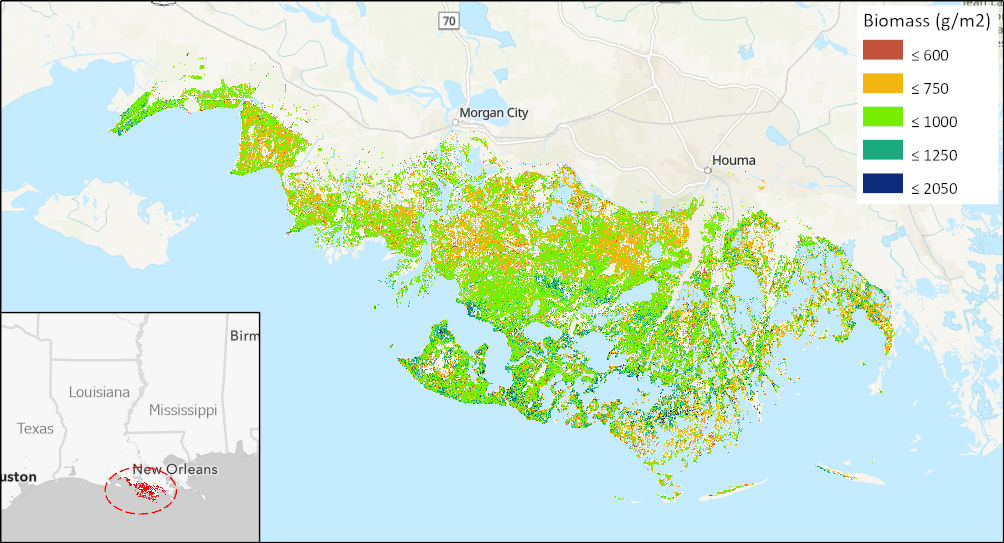The ORNL DAAC recently released the following new Carbon Monitoring System (CMS) dataset by Byrd, K.B., et al. (2021):
Aboveground Biomass High-Resolution Maps for Selected US Tidal Marshes, 2015
This dataset provides estimates of aboveground tidal marsh biomass at 30 m spatial resolution for six estuarine regions of the conterminous United States: Cape Cod, MA; Chesapeake Bay, MD, Everglades, FL; Mississippi Delta, LA; San Francisco Bay, CA; and Puget Sound, WA. Estuarine and palustrine emergent tidal marsh areas were based on the 2010 NOAA Coastal Change Analysis Program (C-CAP) data. Aboveground biomass estimates were generated from a random forest model driven by Landsat vegetation indices and a national scale dataset of field-measured aboveground biomass. The final model, driven by six Landsat vegetation indices, with the soil adjusted vegetation index as the most important, successfully predicted biomass for a range of marsh plant functional types defined by height, leaf angle, and growth form. The largest mean aboveground biomass concentrations were found in the Chesapeake Bay, the Terrebonne and St. Mary Parishes in Louisiana, and in the San Francisco Bay region.
The NASA CMS program is designed to make significant contributions in characterizing, quantifying, understanding, and predicting the evolution of global carbon sources and sinks through improved monitoring of carbon stocks and fluxes. The System uses NASA satellite observations and modeling/analysis capabilities to establish the accuracy, quantitative uncertainties, and utility of products for supporting national and international policy, regulatory, and management activities. CMS data products are designed to inform near-term policy development and planning.
Additional data from CMS and other relevant links can be found on the ORNL DAAC's CMS Project Page.
Citation: Byrd, K.B., L. Ballanti, N. Thomas, D. Nguyen, J.R. Holmquist, M. Simard, and L. Windham-Myers. 2021. Aboveground Biomass High-Resolution Maps for Selected US Tidal Marshes, 2015. ORNL DAAC, Oak Ridge, Tennessee, USA. https://doi.org/10.3334/ORNLDAAC/1879

